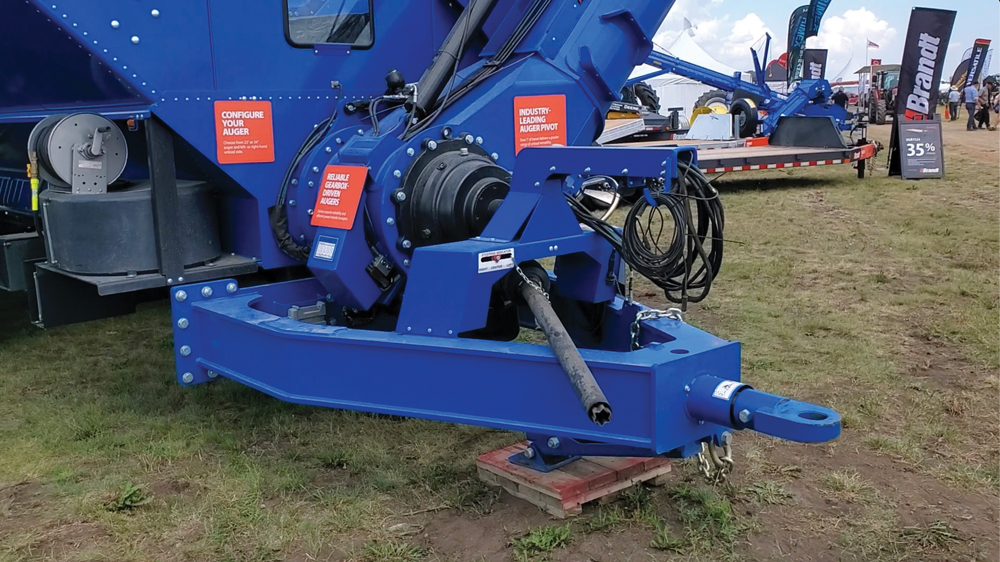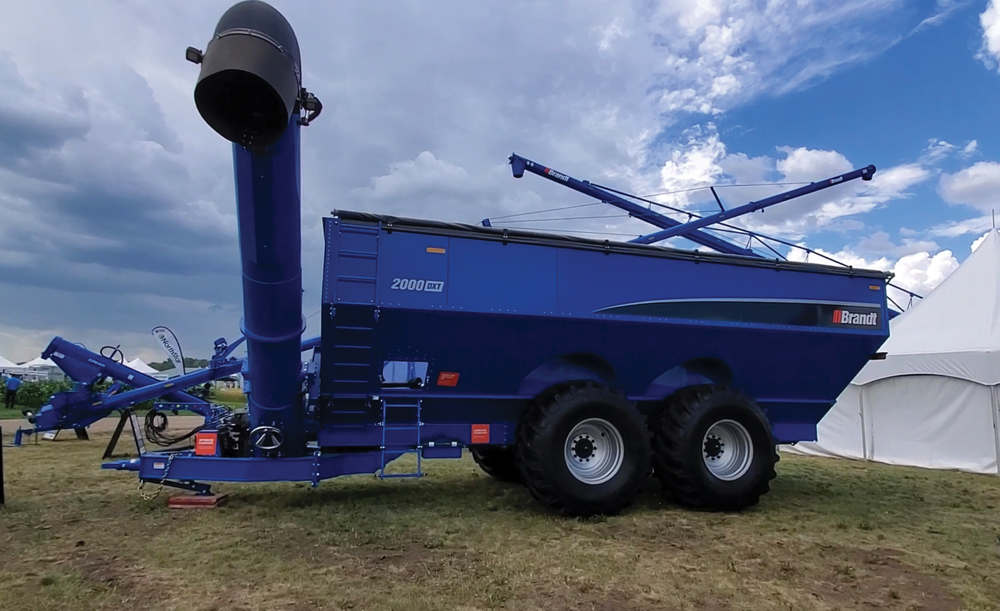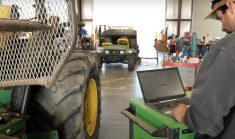Winter is the season when growers have a little time to pull machines into the shop for annual maintenance. It’s the perfect opportunity to give the whole farm fleet a thorough going over to identify any potential problems before they lead to a breakdown, which will almost certainly occur in season when time is at a premium.
Kinze Manufacturing recently wanted to remind producers that the grain cart should be among those machines brought in for a checkup. And they published a list of maintenance items to pay attention to. Some are obvious, but Kinze’s list includes a number of things some may overlook. Here’s a summary of their recommendations with a few of our own suggestions thrown in.
A good place to start is with a thorough cleaning to remove built up dirt and debris that might be hiding problems and promoting corrosion. From there, it’s possible to do an overall inspection. Look for cracks or damage to the side panels and frame. Structural defects like cracks or excessive rust could lead to catastrophic failure when the cart is loaded. Sanding down minor rust spots and treating them with some rust inhibitor and paint will slow down rusting significantly and extend the life of the cart. That will keep it looking good too, not to mention improving its resale value when you decide to replace it.
Read Also

Claas brings 1000 Series SP forage harvesters to Canada
In mid-August, Claas unveiled its new line of Jaguar forage harvesters at an event in Visalia, California, deep in the heart of that state’s dairy region.
There are lots of different spray bombs out there that will do the job. If you’re a stickler for looks, it’s even possible to get an autobody supply store to colour match the cart’s paint in a specially mixed spray can.
If the cart is equipped with a scale, now is a good time to check its accuracy. Kinze recommends doing at least five weight comparisons using another scale that has certified accuracy. And check the electrical connections to the scale components. Clean them if necessary and apply a protective coating on exposed segments. Look for chafing and wear on wires that could cause a short circuit.
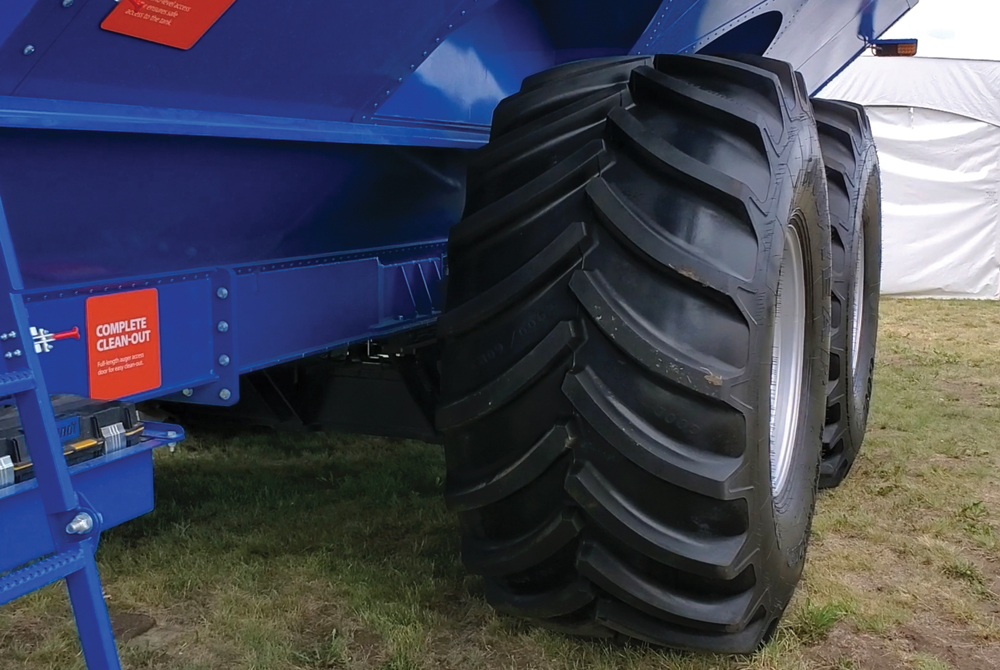
If your cart has wheels (rather than tracks), Kinze recommends re-torquing the wheel nuts. If you find any loose nuts, be sure to check the rim and studs for damage, such as cracks that might have occurred due to excessive flexing under load. Check tire pressures. Low air pressure in the tires can lead to overheating and premature failure.
Check the heel bearings too. They should be repacked with fresh grease periodically.
If your cart has tracks, check their alignment and belt tension to ensure even wear. Lubricate and inspect the bogies. Look for excessive wear or cracks on axle bolts and the main track frame.
On the driveline, look for slack or wear in components, and check oil levels in the gearbox. Inspect hydraulic hoses for fraying, wear or leaks. A simple blown hydraulic hose can shut down field operations for a few hours, so replacing those that look to be in poor condition now could save precious hours later, which would outweigh any value in trying to cut costs and squeeze a few more months of use out of them.
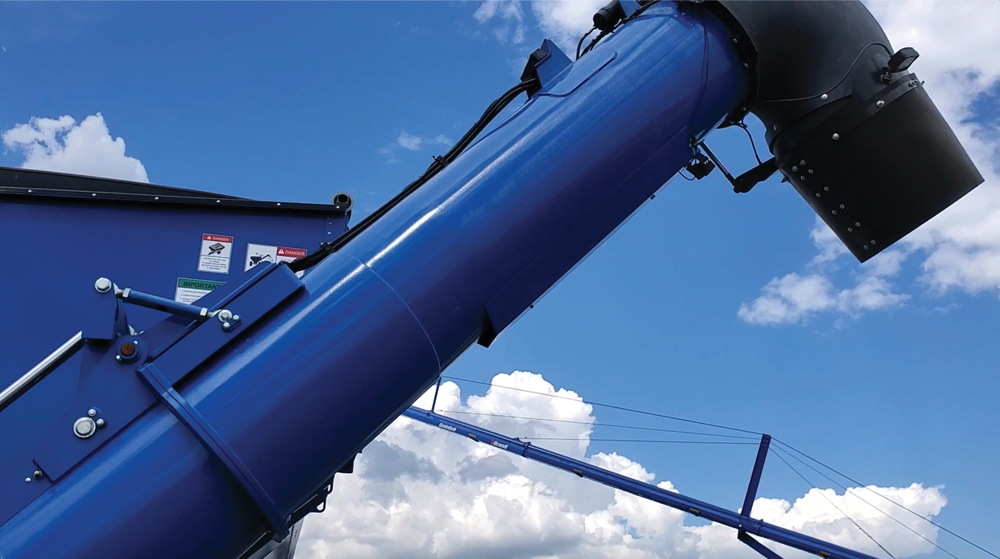
Augers wear over time, causing internal flighting to become smaller in diameter, which reduces their performance. Replacing badly worn auger flighting will significantly improve the cart’s efficiency. Specifically, look for wear where grain transitions from the horizontal to vertical augers. These are the high-wear locations that slow unload times and put strain on other components.
Adjust drive belt tensions and inspect PTO shafts for cracks in the grooves and lubricate the slip joint in the shaft. Make sure all safety shields are in place. Too many farmers have been killed from PTO entanglements.
Don’t forget to go up and check the condition of the tarp. If it’s electric, be sure it rolls easily and doesn’t bind up.
There is also road safety to consider. Carts often make a lot of trips on public roads, so make sure slow-moving-vehicle signs are in place as well as reflective tape along with ensuring any lights or signals are working.
Finally, give the hitch and safety chains a final inspection to ensure the cart and tractor stay together. On older carts, cracks or severe rusting could lead to a failure under load, which would make for a very bad day.
